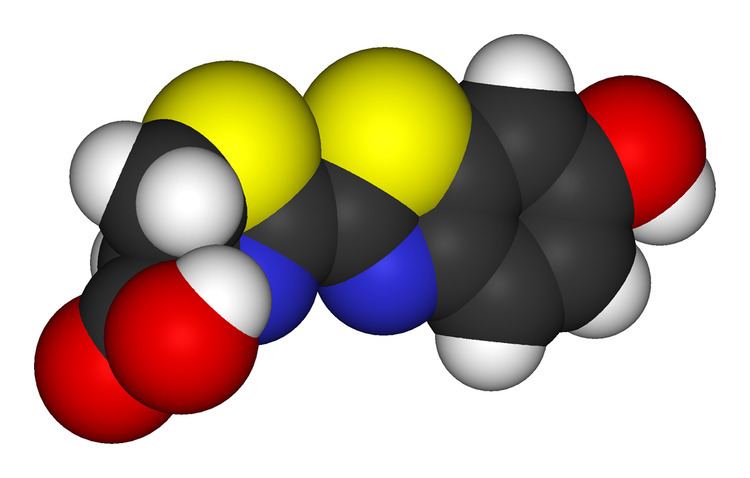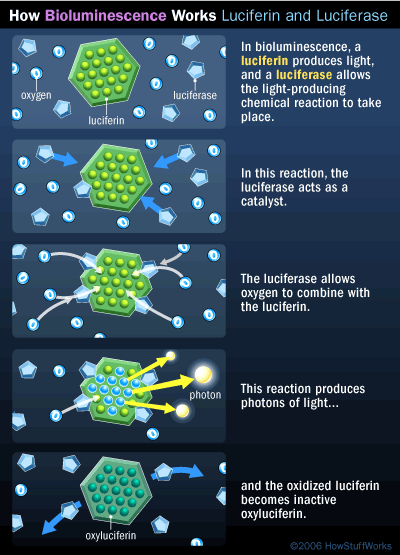 | ||
Luciferin (from the Latin lucifer, "light-bringer") is a generic term for the light-emitting compound found in organisms that generate bioluminescence. Luciferins typically undergo an enzyme-catalysed oxidation and the resulting excited state intermediate emits light upon decaying to its ground state. This may refer to molecules that are substrates for both luciferases and photoproteins.
Contents

Luciferin short
Types

Luciferins are a class of small-molecule substrates that are oxidized in the presence of the enzyme luciferase to produce oxyluciferin and energy in the form of light. It is not known just how many types of luciferins there are, but some of the better-studied compounds are listed below. There are many types of luciferins, yet all share the use of reactive oxygen species to emit light.
Firefly

Firefly luciferin is the luciferin found in many Lampyridae species. It is the substrate of luciferase (EC 1.13.12.7) responsible for the characteristic yellow light emission from fireflies. The chemistry is unusual, as adenosine triphosphate (ATP) is required for light emission.
Snail
Latia luciferin is, in terms of chemistry, (E)-2-methyl-4-(2,6,6-trimethyl-1-cyclohex-1-yl)-1-buten-1-ol formate and is from the freshwater snail Latia neritoides.
Bacterial

Bacterial luciferin is a type of luciferin found in bacteria, some of which live within the specialized tissues of some squid and fish. The molecule contains a reduced riboflavin phosphate.
Coelenterazine

Coelenterazine is found in radiolarians, ctenophores, cnidarians, squid, brittle stars, copepods, chaetognaths, fish, and shrimp. It is the prosthetic group in the protein aequorin responsible for the blue light emission.
Dinoflagellate
Dinoflagellate luciferin is a chlorophyll derivative (i. e. a Tetrapyrrole) and is found in some dinoflagellates, which are often responsible for the phenomenon of nighttime glowing waves (historically this was called phosphorescence, but is a misleading term). A very similar type of luciferin is found in some types of euphausiid shrimp.
Vargulin
Vargulin is found in certain ostracods and deep-sea fish, to be specific, Poricthys. Like the compound coelenterazine, it is an imidazopyrazinone and emits primarily blue light in the animals.
